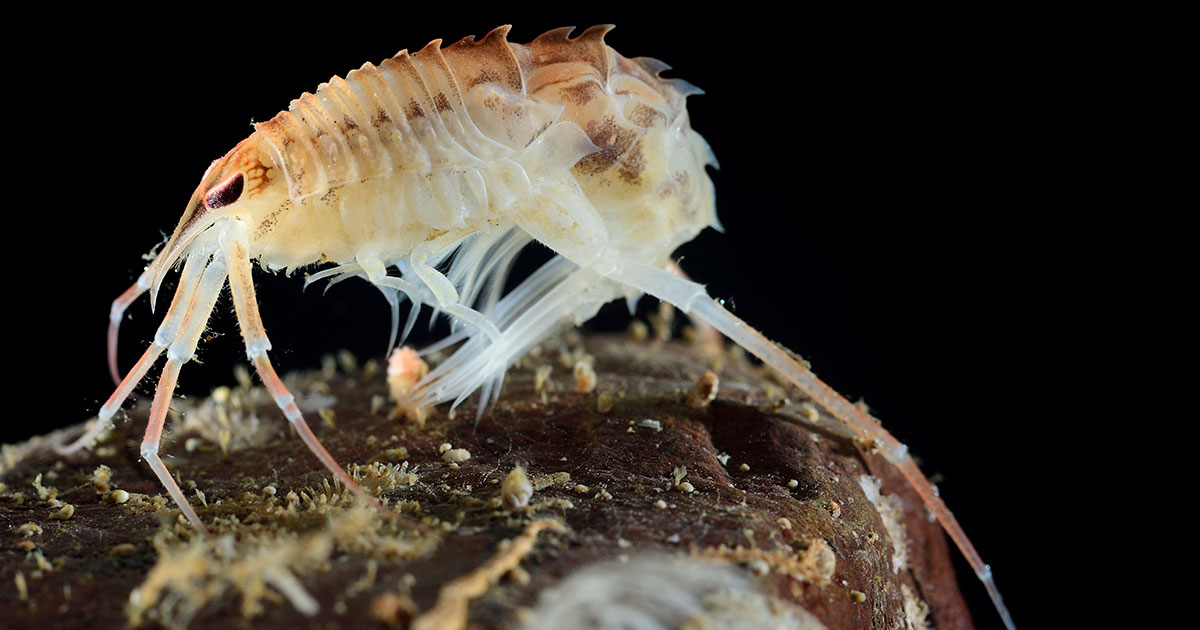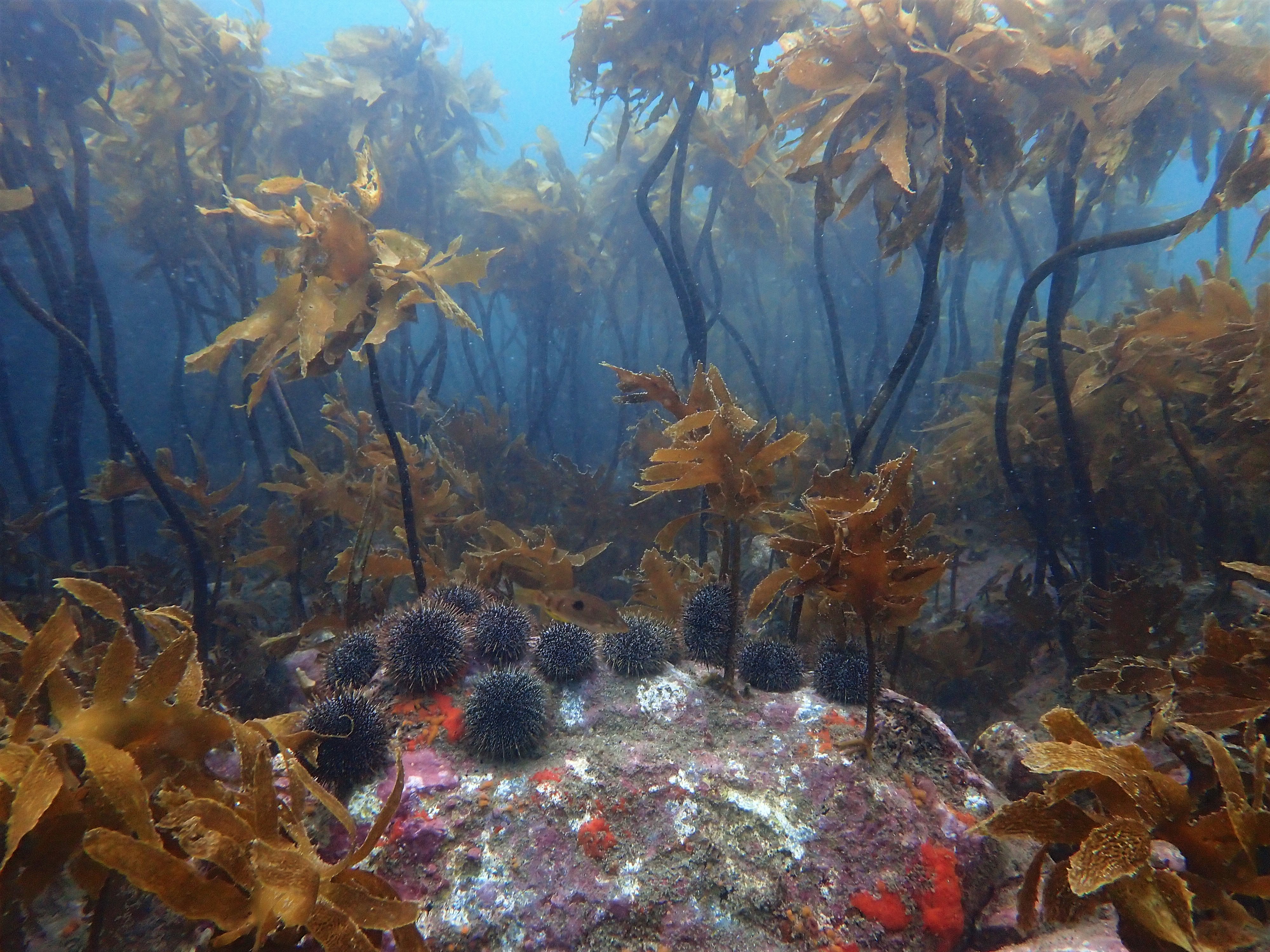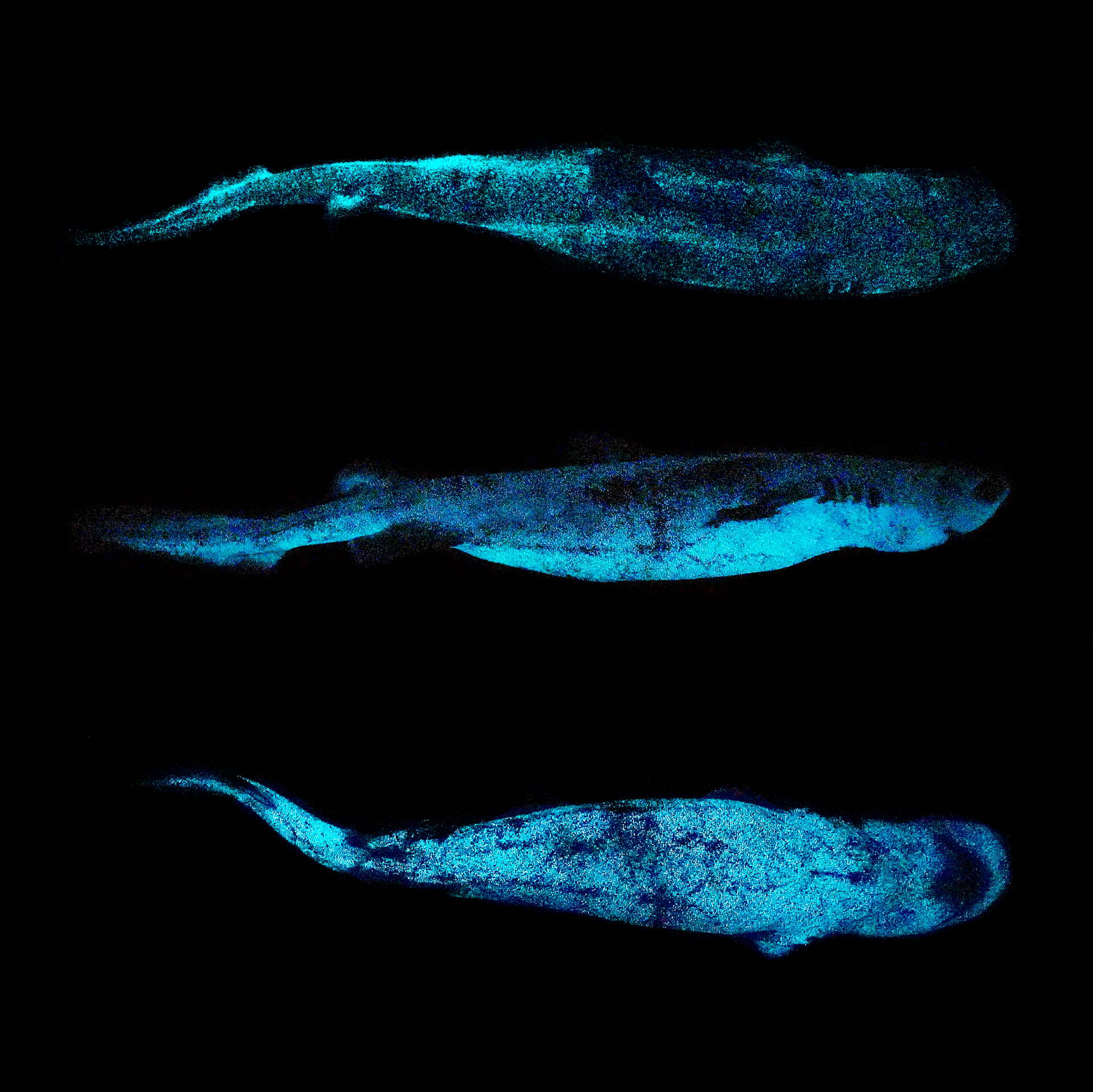Portrait Winner—Sassy Eyed Amphipod
Submitted by Anne Helene Solberg Tandberg (University Museum of Bergen) and photographer Solvin Zankl.
The amphipod species Rhacotropis acuelata has been known for 240 years, but still brings us new and exciting knowledge and understanding. In 2018, two of the IceAge3-scientists (both named Anne) together with Professor Endre from Bergen proved this to be one of the true circumarctic species we have in the deep arctic seas. Examining it live on the vessel R/V Sonne last summer again shows us new aspects—look at the unusual use of the antennae—almost as if it uses them for walking, while that one leg is really out of proportion with the rest!

(Image credit: Anne Helene Solberg Tandberg, Solvin Zankl)
Story Winner—The Battlefront
Photo by Ohad Peleg at Cape Rodney, Leigh, New Zealand, Jul-2020.
Kelp forests dominate shallow temperate rocky reefs around the world, but overfishing can release sea urchins from predation, leading to their proliferation and to deforestation of the kelp by sea urchins grazing. This contrast between healthy kelp forests to denuded urchin barrens underlines how humans can indirectly degrade the reef ecosystem and reduce its sustainability.

(Image credit: Ohad Peleg)
Large reef areas around the world were reported to have shifted from kelp forests to urchin barrens. Kelp forests, however, resist deforestation fight back by whiplash and scouring effects. This is a silver lining as once fishing is seized on urchin barrens, sea urchins are controlled, and kelp forests can recover. This should be the first course of action to rebuild kelp forest ecosystem health and sustainability.
In the picture, several ‘kina’ (Evechinus chloroticus) graze on a boulder at the barren-kelp (Ecklonia radiata) frontline. To me, the sea urchins seem as if they are military troops on a deforestation mission, overlooking the kelp forest to decide on the best course of action during a military briefing.
Popular Vote Co-Winners—Eunice Deep Sea Worm
Picture taken by Karlotta Kürzel
The deep sea is considered to be the largest habitat on Earth, with a diverse array of species, many of which remain undiscovered. This unexplored ecosystem is expected to hold one of the highest levels of biodiversity yet remains threatened by climate change and human activities such as deep-sea mining. This polychaeta represents with its otherworldly appearance the incredibly diverse but fragile deep- sea community. The specimen was collected using an ROV Kiel 6000, on board of RV Sonne in May 2020, as part of the IceAge 3 project (Icelandic Marine Animal: Genetics and Ecology) which explores the Biodiversity of Icelandic waters.

(Image credit: Karlotta Kürzel)
Deep Sea Shark
Submitted by Jerome Mallefet
Bioluminescence has often been seen as a spectacular uncommon event at sea but considering the vastness of the deep sea and the occurrence of luminous organisms in this zone, it is now more and more obvious that producing light at depth must play an important role structuring the biggest ecosystem on our planet. Nowadays 10 percent of shark species could be able to produce light i.e., are bioluminescent. This capability is rarely documented due to the difficulty to collect deep-sea sharks. It is the first time that the blueish bioluminescence of the largest vertebrate, the black shark, Dalatias licha, is documented using an extremely sensitive camera.

(Image credit: Jerome Mallefet)
This specimen was collected during the Chatham rise survey conducted in January 2020 by the National Institute of Water & Atmospheric Research Ltd. This first survey revealed a glimpse of the diversity of shark bioluminescence and highlighted the need for more research to help understand these unusual deep-sea inhabitants: the glowing sharks.
Organized by World Conference of Marine Biodiversity and its endorsing International Association of Biological Oceanography, University of Auckland, and Conservation International
This feature appeared in Environment, Coastal & Offshore (ECO) Magazine's 2021 Spring edition, to read more access the magazine here.





